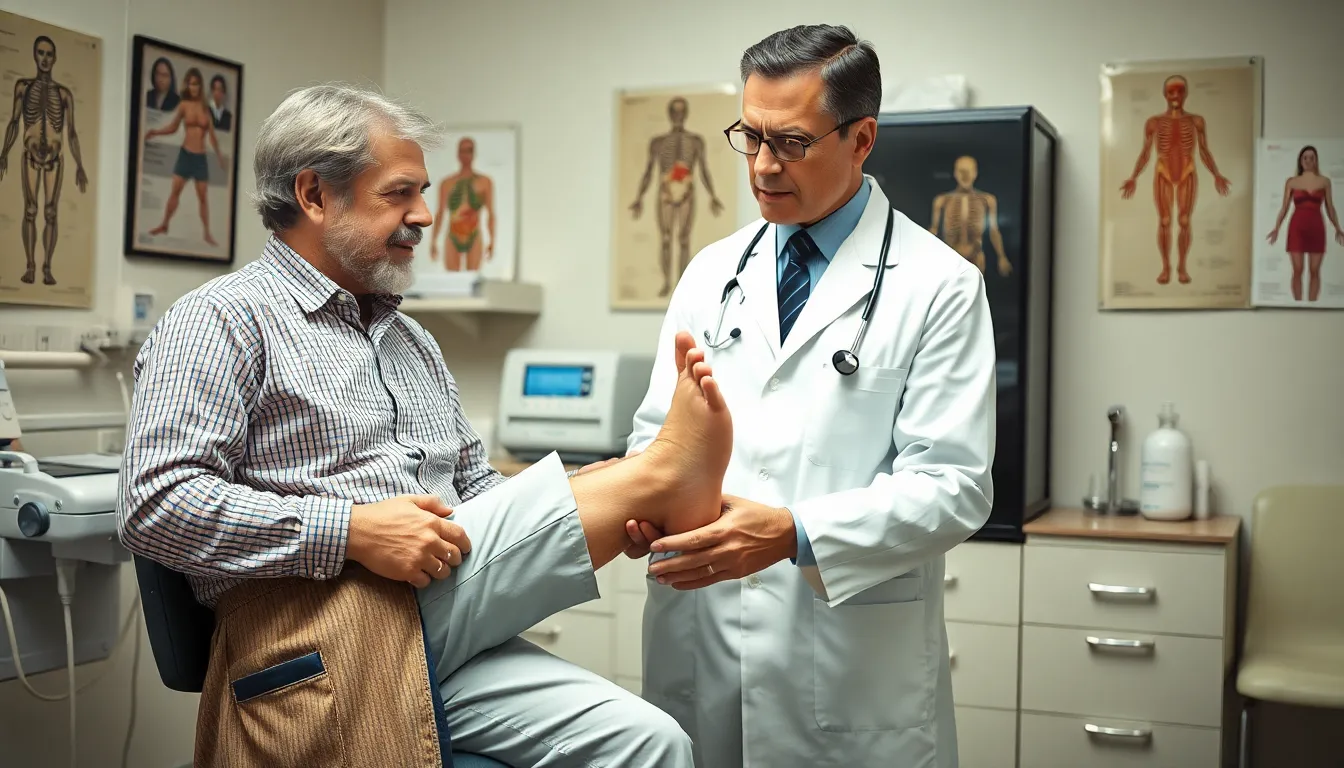Pavatalgia disease might sound like a fancy Italian dish, but it’s anything but delicious. This condition can leave individuals grappling with discomfort that’s hard to ignore. Understanding how to diagnose pavatalgia is crucial, as catching it early can spare many from unnecessary suffering and confusion.
Table of Contents
ToggleUnderstanding Pavatalgia Disease
Pavatalgia is a medical condition characterized by intense discomfort, significantly impacting daily life. Understanding its definition and symptoms is crucial for effective diagnosis and management.
Definition and Symptoms
Pavatalgia refers to pain localized in the pavatal region, typically within the lower extremities. Common symptoms include aching sensations, throbbing discomfort, and occasional swelling. Patients often report symptoms worsening with activity or prolonged standing. Some experience numbness or tingling, which can affect mobility. Recognizing these symptoms early facilitates timely medical evaluation and intervention.
Causes and Risk Factors
Various factors contribute to the onset of pavatalgia. Genetic predisposition plays a significant role, with family history influencing susceptibility. Additionally, repetitive strain injuries can lead to inflammation and pain in affected areas. Environmental factors, such as poor footwear and uneven surfaces, increase risk levels. Certain health conditions, including diabetes and obesity, also heighten vulnerability to pavatalgia. Identifying these risk factors assists healthcare professionals in implementing effective prevention strategies.
Diagnostic Methods

Diagnosing pavatalgia involves multiple approaches to ensure accurate identification of the condition. Medical professionals utilize physical examinations and imaging tests effectively.
Physical Examination
During a physical examination, the healthcare provider assesses the patient’s overall mobility and range of motion. They check for localized tenderness, swelling, and any signs of instability in the pavatal region. Physicians often inquire about the patient’s activities and symptom triggers to gain a clearer understanding of their experience. Observation of gait may also provide insights into any compensatory mechanisms. This thorough assessment helps confirm the diagnosis of pavatalgia while ruling out other potential causes.
Imaging Tests
Imaging tests play a crucial role in the diagnosis of pavatalgia. X-rays can reveal structural abnormalities, such as fractures or joint issues. MRI scans offer detailed images of soft tissues, helping identify inflammation or nerve entrapment. Ultrasound may also be used to visualize blood flow in the area and detect any vascular problems. These imaging techniques enhance the diagnostic process, allowing for accurate interpretation of the underlying condition affecting the patient.
Laboratory Tests
Laboratory tests play a vital role in diagnosing pavatalgia. They provide crucial insights into the underlying causes of symptoms.
Blood Tests
Blood tests offer valuable information regarding inflammation and overall health. Elevations in inflammatory markers, such as C-reactive protein (CRP) and erythrocyte sedimentation rate (ESR), can indicate the presence of underlying conditions contributing to pavatalgia. Additionally, blood glucose levels assess for diabetes, a known risk factor. Complete blood counts (CBC) can reveal anemia or infections affecting mobility. Physicians often recommend these tests as part of a comprehensive evaluation.
Genetic Testing
Genetic testing allows for the identification of hereditary factors linked to pavatalgia. Testing can reveal mutations associated with connective tissue disorders or other genetic conditions that impact pain perception or musculoskeletal health. Families facing recurring instances of pavatalgia can benefit from genetic insights that guide targeted prevention strategies. Doctors may suggest genetic counseling to explain the implications of test results comprehensively.
Consultation with Specialists
Consultation with specialists is crucial for effectively diagnosing pavatalgia. Early intervention often leads to better outcomes.
When to See a Doctor
Symptoms of pavatalgia warrant a medical evaluation. Persistent pain in the pavatal region, despite home remedies, indicates a need for professional assessment. If symptoms worsen with activity or accompany swelling and numbness, seeking medical attention becomes essential. Early consultation helps in identifying potential underlying conditions and devising appropriate management plans. They may recommend additional tests or refer the patient to the right specialist, ensuring an accurate diagnosis.
Recommended Specialists
Several specialists can aid in diagnosing pavatalgia effectively. A primary care physician often serves as the first point of contact, evaluating initial symptoms and medical history. Referral to a rheumatologist occurs if autoimmune disorders are suspected. Orthopedic specialists can assess musculoskeletal issues, while neurologists evaluate nerve-related conditions. Physical therapists may also assist in treatment plans, focusing on mobility and strength. Collaboration among these specialists ensures a comprehensive approach to diagnosing pavatalgia, guiding effective management strategies.
Diagnosing pavatalgia requires a thorough understanding of its symptoms and potential underlying causes. Early recognition of pain and related issues is essential for effective management. By collaborating with various specialists and utilizing advanced diagnostic tools, patients can receive a comprehensive evaluation that addresses their unique needs. This proactive approach not only alleviates discomfort but also enhances overall mobility and quality of life. Seeking timely medical advice ensures that individuals facing pavatalgia can navigate their condition with confidence and clarity.




